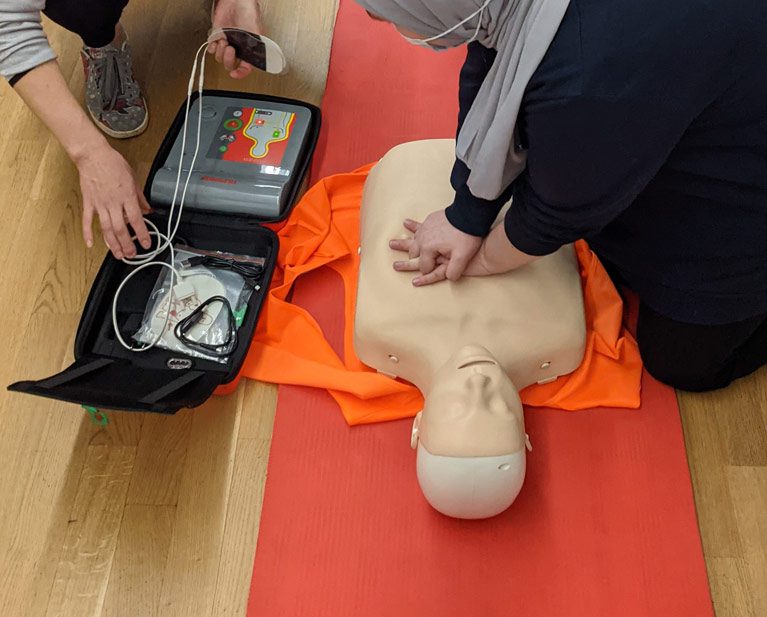Commotio Cordis is a term that has been flying around within the last couple of weeks, given Damar Hamlin's recent collapse during the Buffalo Bills game. Though it is still unclear what caused the young athlete's collapse and cardiac arrest, one of the potential diagnoses seen in the media is commotio cordis. Today's blog post is taking a dive into this diagnosis to shed light on this rare cardiac incident.
What is Commotio Cordis?
Commotio Cordis is a condition where a blunt force trauma to the chest at a very specific moment in the heart rhythm cycle can cause the instant collapse of an individual. During this time, the hit to the chest causes the heart to enter into ventricular fibrillation, or V-Fib. The sudden cardiac arrhythmia interrupts the heart's electrical circuit and, therefore, its ability to pump appropriately. Though rare, with less than 30 cases reported per year, Commotio Cordis is more likely to occur in youth sports (ages 8-18) that involve projectiles such as balls and pucks. However, this can also happen in other sports where there is body-to-body contact, and someone is struck in the chest. Both CPR and the use of an AED is critical for survival. "For every 1-minute delay in the use of an AED, there is a 10% decline in survival rate" (Korey Stringer Institute).
Signs and Symptoms
Below you will find a list of signs and symptoms associated with Commotio Cordis. Immediately identifying these signs is extremely important for proper treatment and an athlete's survival.
- Recent hit to the chest
- No visible signs of trauma
- Athlete may stumble forward for a few seconds after being hit before collapsing
- Once an athlete collapses, they will no longer be breathing or have a pulse
- When connected to an AED, the AED will indicate V-Fib
Prevention
It is difficult to prevent Commotio Cordis due to its unpredictable nature. However, one way to decrease an athlete's risk is to ensure that they have properly fitted equipment and padding. Additionally, it is critical to follow the guidelines put forth by the National Operating Committee on Standards for Athletic Equipment in order to stay safe while participating in sports.
In addition to preventing Commotio Cordis, it is also imperative that there are strategies in place to ensure prompt and appropriate care of athletes should this rare event occur. Below are some methods sports teams of all levels can apply to improve an athlete's chances of survival if they experience Commotio Cordis.
- At least one individual (more would be ideal) certified in CPR/AED should attend all practices and games.
- Having a certified athletic trainer assuming this role is best practice as they have special training in cardiac events along with other sport-related injuries.
- An AED should ALWAYS be accessible.
- Players and coaches should be aware of the device's location if not immediately on the sidelines.
- AEDs should be serviced periodically by the appropriate parties to ensure they are functioning properly BEFORE an emergency arises.
- Every sports team, school, or program should have an emergency action plan in place. This should be reviewed annually with all coaches, staff, and local EMS.
The Importance of CPR and AED Training
As you can see from above, quick response time and adequate training can be the key to keeping an athlete alive if they collapse on the field. Therefore, CPR and AED training is critical-especially for those involved in athletics. There are different levels of CPR and AED certifications depending on a person's background and occupation. Here at Set, each and every team member is CPR/AED certified and ready to tackle an emergency should one arise. Though we are medical professionals, please note that plenty of classes are available for lay people. We have included some of these resources below.
Consider becoming CPR and AED certified today and save a life!
Heartsaver® First Aid CPR AED Training | American Heart Association CPR & First Aid





